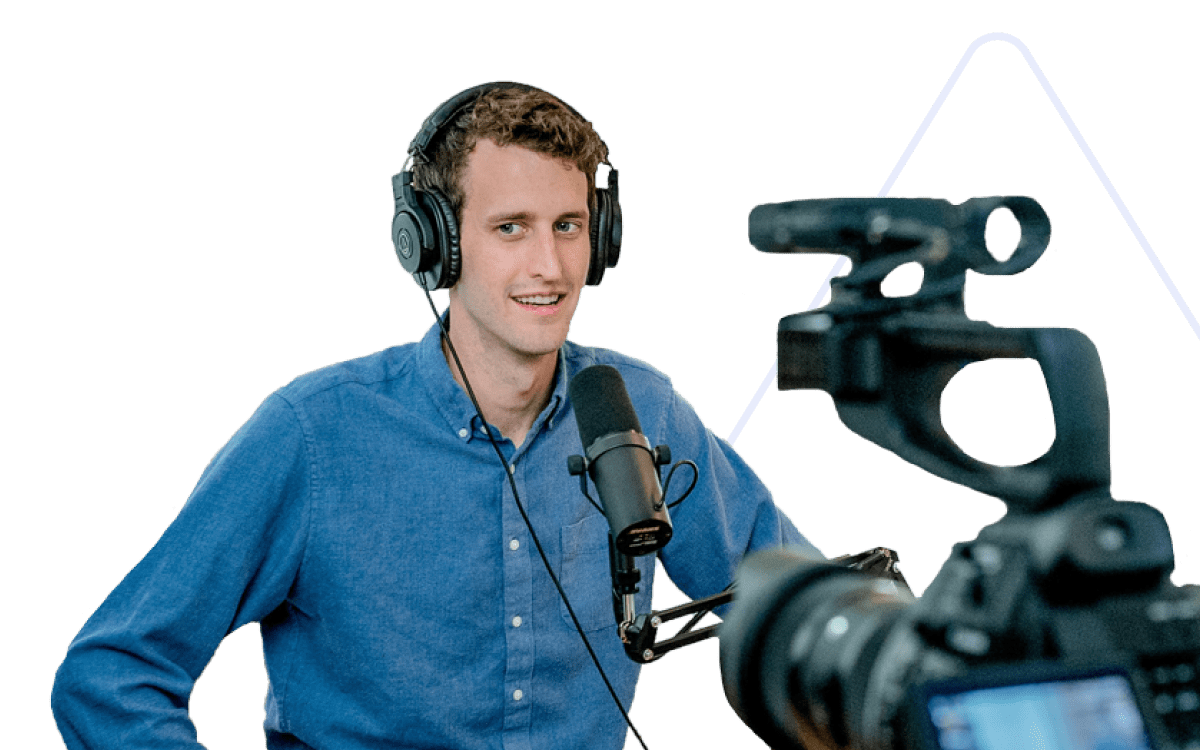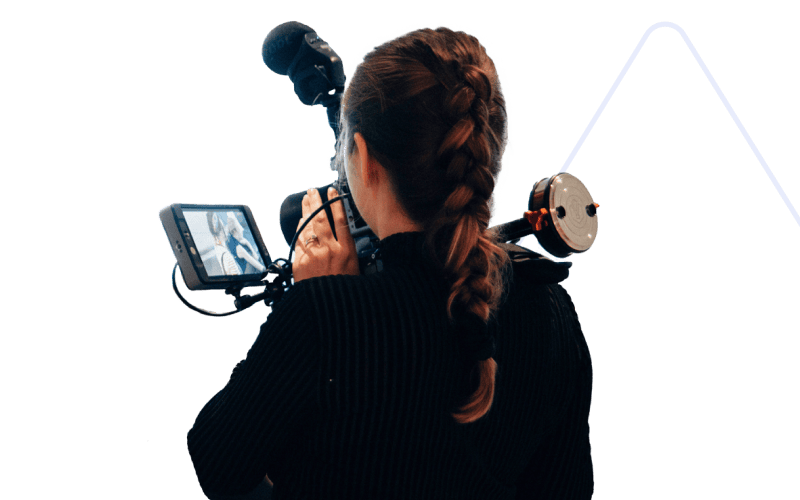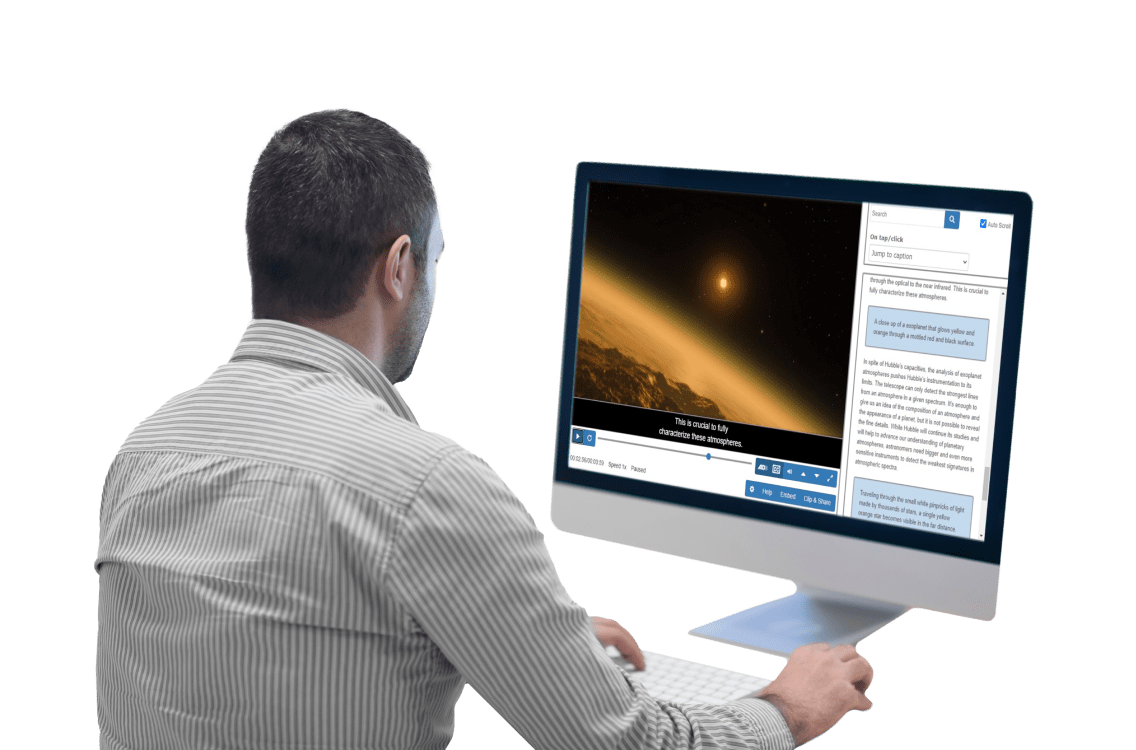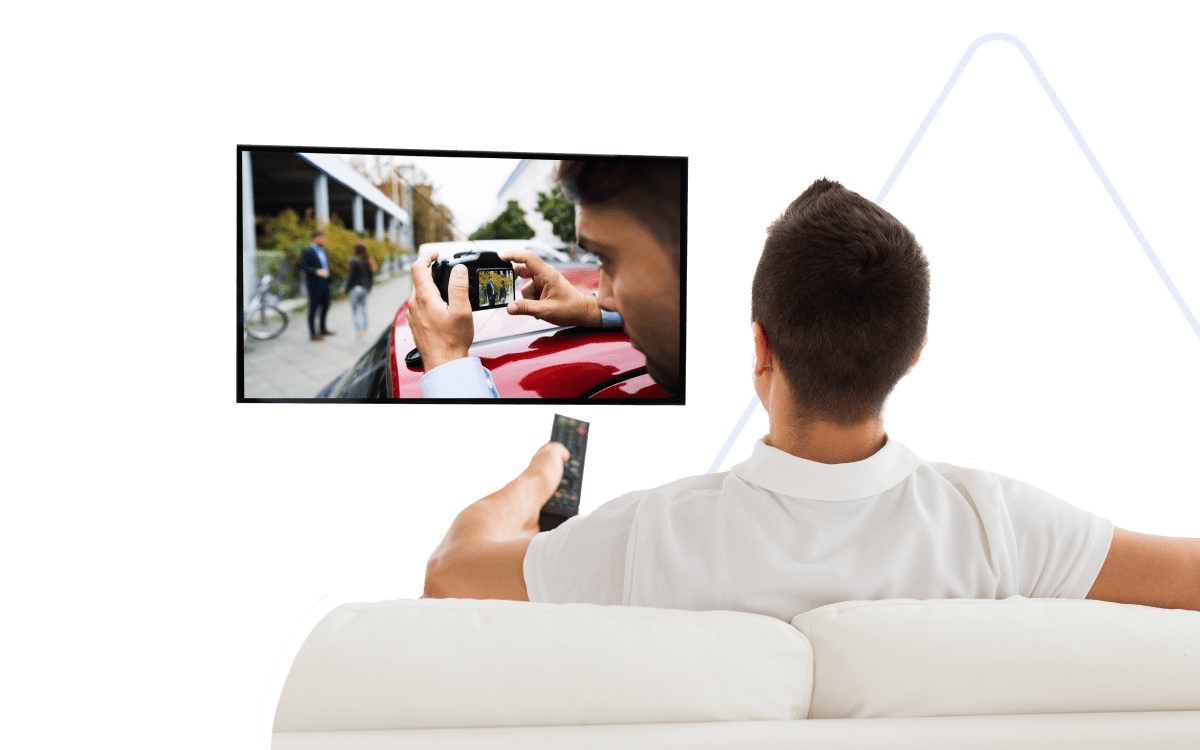Built for media industry needs
Our custom services are designed to serve unique media and entertainment needs, with helpful tools for event accessibility and both live and pre-recorded content. Our expert media team is available 24/7 to support network executives and independent producers alike, offering cost-effective solutions to caption, transcribe, translate, describe and dub.
Our products
Media Live
Provide accurate, high-quality closed captioning for all network broadcasts, including news, live sports and events.
Learn more
Support for compliance
Media and entertainment customers are almost always required to adhere to government rules and regulations. We understand the nuances of guidelines outlined by the Federal Communications Commission, the Americans with Disabilities Act, Ofcom and the European Accessibility Act and even sit on some of these regulatory boards. We share our deep knowledge and expertise with customers to assist them with compliance needs.
Receive files in any format needed
We can deliver transcripts in any template of your choosing and accommodate customization needs for caption alignment. Verbit supports SRT files, VTT, SCC, SAMI and additional formats, plus offer RTMP support for broadcasts and live streaming. We also provide SMPTE timecodes, speaker identification, various spatial video formats and vertical captioning.
Support for multiple languages
Verbit offers multilanguage captioning, transcription, translation and localization. Whether you’re in need of Spanish captioning or French transcription, you can leverage our professional services, with translation of audio and on-screen text into 50+ languages.
As-Broadcast Scripts
In addition to our video, audio and podcast transcription, Verbit offers a variety of standard and custom post-production transcripts with quick turnarounds and at reasonable prices for producers and content creators. These include basic and technical As-Broadcast Scripts, Dialogue Continuity Scripts (DCS), Combined Continuity Lists (CCL), Combined Dialogue and Spotting Lists (CDSL) and Combined Continuity and Spotting Lists (CCSL).
Learn more
Hear from our customers
Explore why thousands of professionals choose to partner with Verbit. Discover their firsthand experiences and how our team supports the diverse needs of media organizations, companies, universities, legal firms and government agencies.

Pricing options
Explore the pricing available to you and discover how best to connect with us to build a custom plan based on your unique needs.
FAQs
Are there any industry standards or regulations for captioning?
Yes, there are several industry standards and regulations, such as the Americans with Disabilities Act (ADA) and FCC guidelines, which mandate that captions must be accurate, in-sync with the audio, complete, and properly placed. These standards ensure that all audiences can access important information and enjoy media content. Visit our Resources page for more information.
How do you ensure compliance with industry standards?
Verbit ensures compliance by staying up-to-date with the latest regulations and guidelines. Our team shares deep knowledge of these standards, assisting clients in meeting compliance needs while providing accurate and high-quality captioning and transcription services. We serve on the Federal Communications Commission’s Disability Advisory Committee and other industry-leading associations. Our team is actively involved in standards setting and compliance, including WCAG, OfCom and the European Accessibility Act.
Is there a way to integrate Captivate™ with my existing media production tools?
Yes, Captivate™ is designed for seamless integration with existing media production tools. Our technology can work alongside and integrate with various platforms, ensuring that you can incorporate our services into your current workflow efficiently.
What is the difference between Media Live and Venue Live?
Media Live provides accurate closed captioning for all network broadcasts, including news and live sports. Venue Live focuses on real-time captioning for onsite events, such as award ceremonies and conferences, ensuring accessibility in various live settings.
How do you handle overlapping dialogue, singing, and sound effects?
Verbit’s advanced technology is equipped to manage overlapping dialogue, singing, and sound effects effectively. Our proprietary automatic speech recognition technology is trained to recognize and differentiate between various audio elements, ensuring clarity and accuracy in captions.
How do you identify differing speakers within captions?
There are different ways to differentiate between speakers in captions which help make captions clearer and easier to follow for the audience, ensuring they can distinguish who is speaking at any given time.
Speaker IDs or speaker labels can be used before each line of dialogue to express who is talking. These IDs could be a proper name (“JOE” or “JANE”) or more general (“MAN” or “NARRATOR”).
Some captions may also display a simple hyphen or dash before lines of dialogue to denote a change of speaker.
– I’ll meet you there.
– Sounds good!
When is captioning commonly used within media?
Captioning is used across all broadcast television (live broadcasts, pre-recorded and scripted programs, and on-demand video content) and events that require real-time accessibility. It’s essential for news programs, sports events, educational materials, and any media aimed at a broad audience.
How does Verbit handle captions for different formats (e.g., live TV, online streaming)?
Verbit accommodates various formats by delivering customized captions based on the specific needs of the content, whether for live TV, online streaming, or other media formats. Our services support multiple file types and ensure that captions are synchronized accurately to enhance viewer experience.











